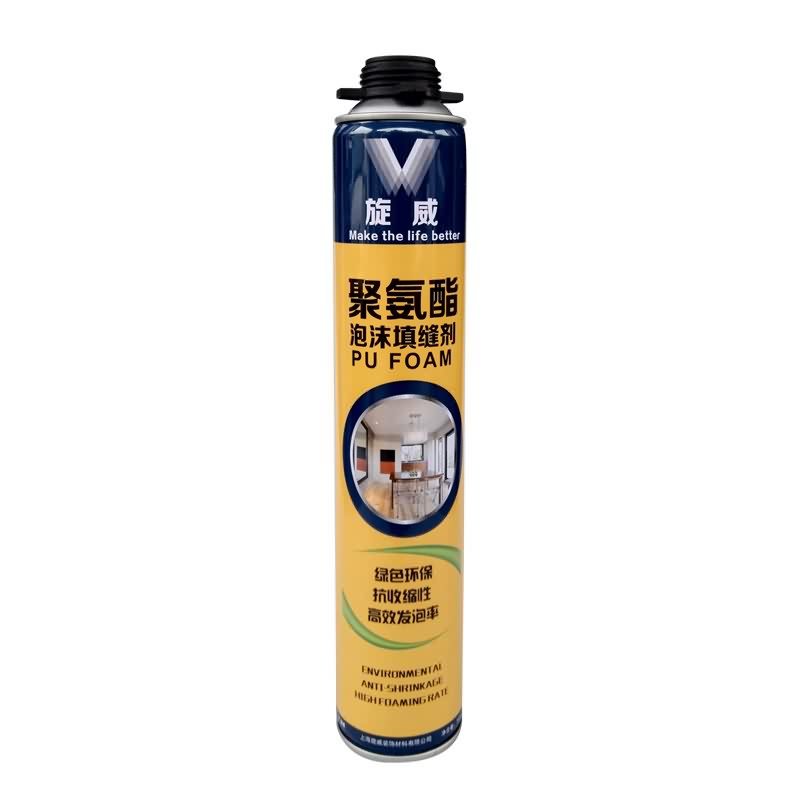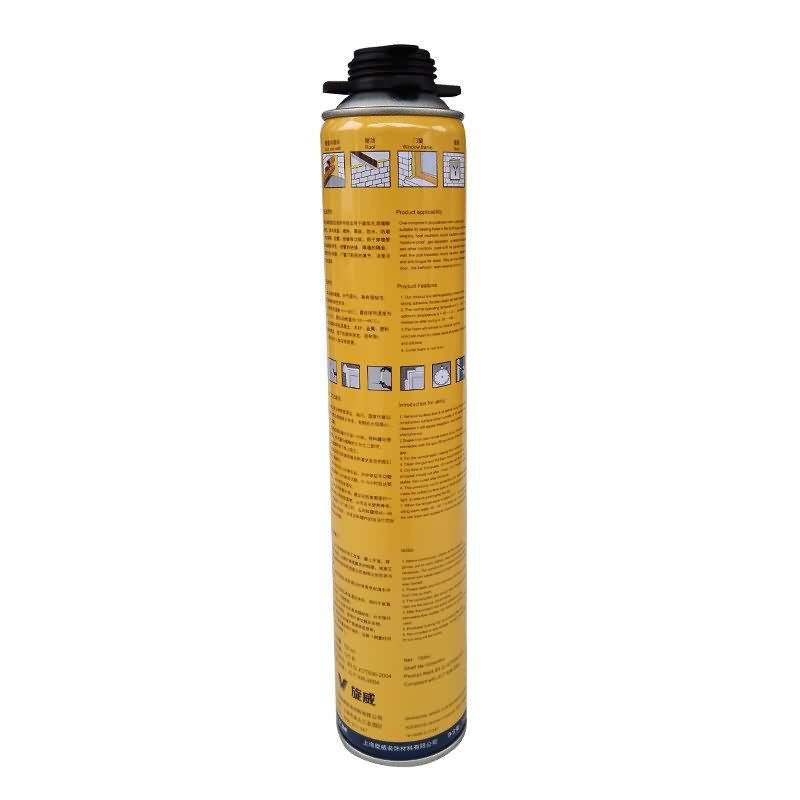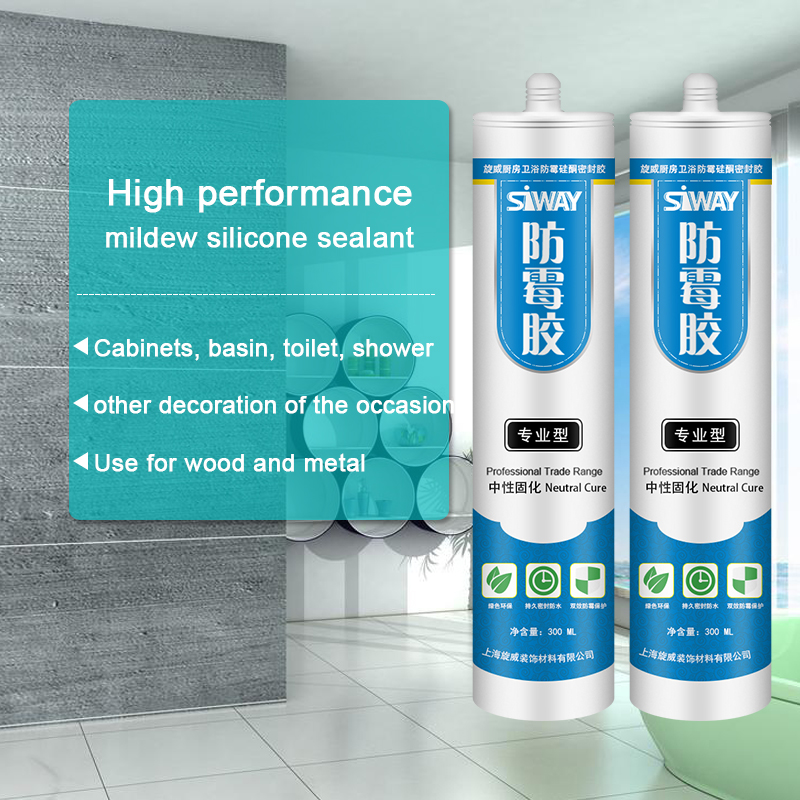22 Years Factory Siway PU FOAM for Czech Republic Factories
Short Description:
Description This product is the expansion, moisture curing, has the strong cohesiveness, elastic foam obturator structure; Save work to save time, reduce waste; High bond strength; Bubble can stick in the concrete, wood, metal, plastic, such as base material surface, but not including teflon, silicon resins; Key Features 1. Noise silencing effect 2. Strong bonding strength 3. Water & weatherproof 4. Primerless adhesion to most building materials Basic Application 1.Doors and Windows a...
continue to improve, to ensure product quality in line with market and customer standard requirements. Our company has a quality assurance system have been established for 22 Years Factory Siway PU FOAM for Czech Republic Factories, All the opinions and suggestions will be greatly appreciated! The good cooperation could improve both of us into better development!
Description
This product is the expansion, moisture curing, has the strong cohesiveness, elastic foam obturator structure; Save work to save time, reduce waste; High bond strength;
Bubble can stick in the concrete, wood, metal, plastic, such as base material surface, but not including teflon, silicon resins;
Key Features
1. Noise silencing effect
2. Strong bonding strength
3. Water & weatherproof
4. Primerless adhesion to most building materials
Basic Application
1.Doors and Windows and wall body between the gap filling sealing, fixed bond
2.Language lab, studio, etc when decorating, gap to fill
Technical data sheet
|
Project |
Value |
||
|
Density, Kg/m³,Not less |
10 |
||
|
Thermal conductivity,35℃,W/(m·K) no more than |
0.050 |
||
|
Dimensional stability(23±2)℃,48,h no more than |
5 |
||
|
Operating temperature |
-10~+35℃ |
||
|
Optimum operating temperature |
+18~+25℃ |
||
|
Temperature range(After curing) |
-35~+80℃ |
||
|
Tensile bond strength kPa Not less |
Aluminum plate |
Standard condition,7d |
80 |
|
Immersion,7d |
60 |
||
|
PVC plate |
Standard condition,7d |
80 |
|
|
Immersion,7d |
60 |
||
|
Cement Plate |
Standard condition,7d |
60 |
|
|
Shear strength,kpa,Not less |
80 |
||
|
Foam expansion ratio,Not less |
Standard value-10 |
||
Certification
JC 936-2004
Color
White
Package
750ml in Bottle * 12 per box
Shelf life
12 months
Note
If you want the TDS or MSDS or other details, please contact with our sales person.
https://mlyon.com Mike Lyon cast 360 individual leaf-shapes using polyester resin and pigments in silicon rubber molds with plaster housing. These were assembled into an unusual chandelier.
Corner detail – Fixing where drywall ties into the log, log corners, exterior saddles anywhere there are openings.
Finishing log home corners with caulk is simple following these instructions.
TRANSCRIPT:
Hi, my name is Scott, with Weatherall Company, and I’m going to quickly cover how you handle a corner detail. This is an example of where drywall ties into the logs. What I’m doing here can be used where you have log corners, log saddles on the exterior, doing any type of corner detail.
So first, if I have openings like that you see here, I need to throw a little bit of backer rod in there. It’s fairly simple to do. Just quickly cut off … I usually find bits of scraps of backer rod lying around, and I put them in there, make sure they’re flush. That piece right there might need a piece of round backer rod, and I will put that in there. A lot of times I will carry around just kind of a dull, heavy chisel, and that will help, usually just help push stuff in there.
Now that is actually fine and we’re good to go, but any area where it opens up, probably more than a quarter of an inch, you’re going to want to fill. Same goes for the logs. If the logs are cut back from the drywall, you’re going to want to cut a piece, fill it, make sure it’s flush, and then we’ll go ahead and chink it.
I am using my Albion caulking gun for this, with a half inch nozzle. That helps provide the best detail for these joints. You don’t need to go over a half inch. I see some people put large pieces of backer rod and they will chink that to about the same width of their horizontal joints and that is overkill. It’s probably not the best joint design. It’s much easier and better just to go with the smaller tip. I wouldn’t go under a half inch. I wouldn’t do a quarter or an eighth inch of material.
It really is about this simple. Nice thing about this gun is I can move it around, I can go upside down with it. Again, I’ve got a 45 degree tip and I’m trying to keep that tip perpendicular to my work surface, and try and put that stuff in there as perfect as I can because it just makes for finishing a lot easier. And it should really just go about this quick. Really, not that difficult.
Usually right about here I will stop, release the pressure on the gun, and start from the bottom. I have better control over the gun that way. I try to keep the material as flat as I can. If I hold the gun up like this, I get the material too thick. It’s going to be a lot harder to trowel. If I can keep that tip flat, it can be a lot easier to finish the material.
Once you get used to it, it goes fairly fast. Shouldn’t take a whole heck of a lot of time to do these joints. A lot of times they just blend right in with the drywall. Now, we’ll usually go right over the molding. See how this molding is scribed into the log? We’ll cover that as well.
And then to trowel it, I usually just use my finger. And if you’ve done a good enough job applying it, you don’t really have to fiddle with it for too much. I usually just spray a little on the material and just go right over the top of it. All you’re doing is just gently seating the material against the log.






